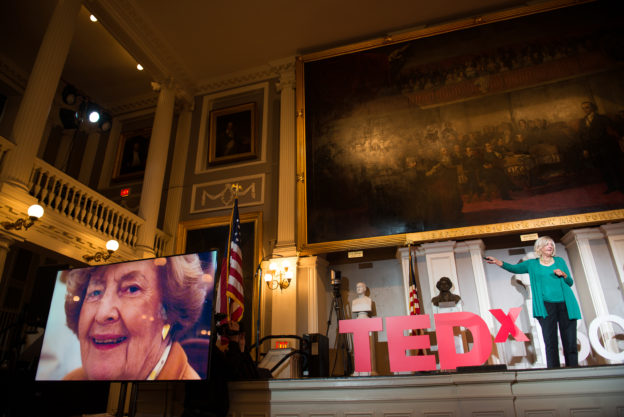7 Funeral Industry Thought Leaders You Should Be Following On Social Media
July 9th, 2019
Every industry has a few thought leaders that are worth following on social media, and the funeral profession is no different!
We’ve gathered some of the most epic Funeralpreneurs around the globe, but this time we want to give you some inspiration for your social feed!
With that being said, here are our top 7 funeral industry thought leaders to follow (and why):
1. Joe Pray
Creationeer and Funeral Director at Pray Funeral Home

Why you should follow him:
Joe Pray is a 5th Generation funeral director who is filled with endless inspiration when it comes to planning (or Imagineering, as he calls it) personalized funeral services. His hands on approach and creative outlook provides valuable insight into providing one of a kind services that truly celebrate a life well lived. Get inspired with his helpful blog that highlights the unique services Joe helps dream up and execute flawlessly.
How to follow him: You can follow Joe Pray Funeral Home on Facebook and Twitter
2. Amy Cunningham
Green Burial Advocate and Owner of Fitting Tribute Funeral Services

Why you should follow her:
Amy has been featured in numerous publications including the New York Times and was recently named “The Death Ritual Disrupter” by Women’s Health Magazine in reference to her progressive approach to funeral planning. Amy has completely immersed herself in service, from her role as a Death Doula and funeral director, to her blog for families and end-of-life professionals alike, called The Inspired Funeral.
We love Amy because she is dedicated to a unique offering, which she describes as “ritual and ceremony to help us honor our humanity and feel held by something larger.” Amy is a true leader when it comes to changing the way we relate to death and mourning. And, she is creating a culture shift with the death positive movement.
How to follow her: You can follow Amy on Facebook and Twitter
3. Katrina Spade
Founder & CEO of Recompose

Why you should follow her:
Katrina has radical and innovative ideas about how to care for the deceased and the environment at the same time. We love her ideas about her project, Recompose, which she beautifully states: “Recompose is powered by people who believe in changing the current death care paradigm by offering a gentle, humane, and ecological model.”
Katrina invented a system to transform the dead into soil, which is now patent-pending. She leads an astounding team that envisions a future where our bodies nourish and return to the earth which we came from. And, where families participate in the profound human experience of death. That way, we as humans have a chance to positively impact the environment with sustainable and beneficial recomposition.
How to follow her: You can follow Katrina on Twitter
4. Sam Sieber
Vice President of Research, Bioresponse Solutions

Why you should follow her:
A biologist and advocate of aquamation technologies, Sam Sieber is leading us towards an environmentally friendly way to cremate bodies with… can you guess it? Water! Already in practice in 15 states, aquamation: “ has no emissions, it’s greener, it’s a clean technology to work with,” said Sam in a 2018 Wired interview.
Bioresponse was founded by her father and she continues the work in his legacy, drawing attention to the environmental impact the way we currently care for the dead has upon on the earth.
How to follow her: You can follow Sam on Facebook and Twitter
5. Alua Arthur
Death Doula, Going With Grace

Why you should follow her:
Alua Arthur is a Death Doula, attorney, and the founder of Going with Grace, an end-of-life planning organization that exists to support people as they answer the question: What must I do to be at peace with myself so that I may live presently and die peacefully?
From private end of life consultations and public education about death, to online coursework to train death doulas, she is tirelessly committed to bringing awareness to death and dying which she believes can inspire the way people live. We absolutely admire her dedication to this cause.
How to follow her: You can follow Alua on Facebook and Instagram
6. Ellen Goodman
Founder of The Conversation Project

Why you should follow her:
Pulitzer Prize-winning writer Ellen Goodman founded The Conversation Project in 2010 after serving as a caregiver to her mother with Alzheimer’s disease for many years. She and her mother had never discussed end-of-life care, but in the end, the care decisions fell to Ellen. “I realized only after her death how much easier it would have been if I heard her voice in my ear as these decisions had to be made,” she says about the experience.
The Conversation Project helps initiate these important discussions by offering starter kits that include resources and guides for helping with this difficult conversation. Their research shows that the desire is there, most people just need some support in starting “the conversation of a lifetime.”
How to follow her: You can follow The Conversation Project on Facebook and Twitter
7. Gail Rubin
Author of “A Good Goodbye: Funeral Planning for Those Who Don’t Plan to Die”

Why you should follow her:
You may remember Gail from this awesome TED Talk we posted a while back! Gail approaches the topic of pre-need planning with humor, grace, and a warm heart. She has been a major pioneer to getting the Death Cafe movement started in the United States. And, she has co/authored numerous books about how to instigate and stick with pre-need planning. She was also recently awarded the 2019 “Women of Influence Award” by Albuquerque Business First. Gail is the leading voice when it comes to approaching funeral planning while still alive, and has certainly earned her moniker as the “The Doyenne of Death.”
How to follow her: You can follow Gail on Twitter and check out her Podcast
What other funeral professional thought leaders are out there who you like to follow? Tell us about them in the comments below, and we could feature them in a future blog!




Leave a Reply